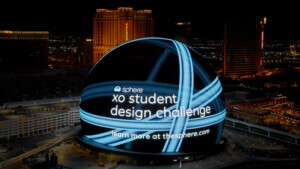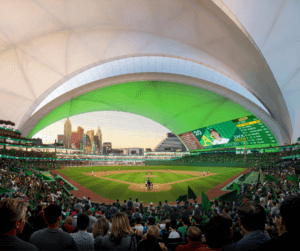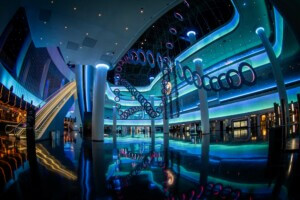Las Vegas was an unlikely model for architecture when the provocatively titled Learning from Las Vegas was published in 1972. In the book, authors Robert Venturi, Denise Scott Brown, and Steven Izenour looked to the city to make their case for a reinvigoration of symbolism in architecture, this to address the new “automobile landscape of great distances and high speed, where the subtleties of pure architectural space can no longer be savored.” Their deft and influential argument came by way of a rigorous analysis of the basic features of the Strip, like parking lots and casino signs.
Half a century later, a new effort to study and appreciate the city’s architecture has coalesced around those same signs, many of which are now in the collection of The Neon Museum in downtown Las Vegas, which promotes the preservation and study of the city’s historical signage. Earlier this month, the museum presented the second annual Duck Duck Shed, a four-day event of talks, panels, tours, and evening entertainment focused on Las Vegas architecture and design. Events were separately ticketed, with prices ranging from a free exhibition of Debbie Reynolds’s memorabilia at City Hall to $200 for a steak dinner with infamous mob attorney and former mayor Oscar Goodman.
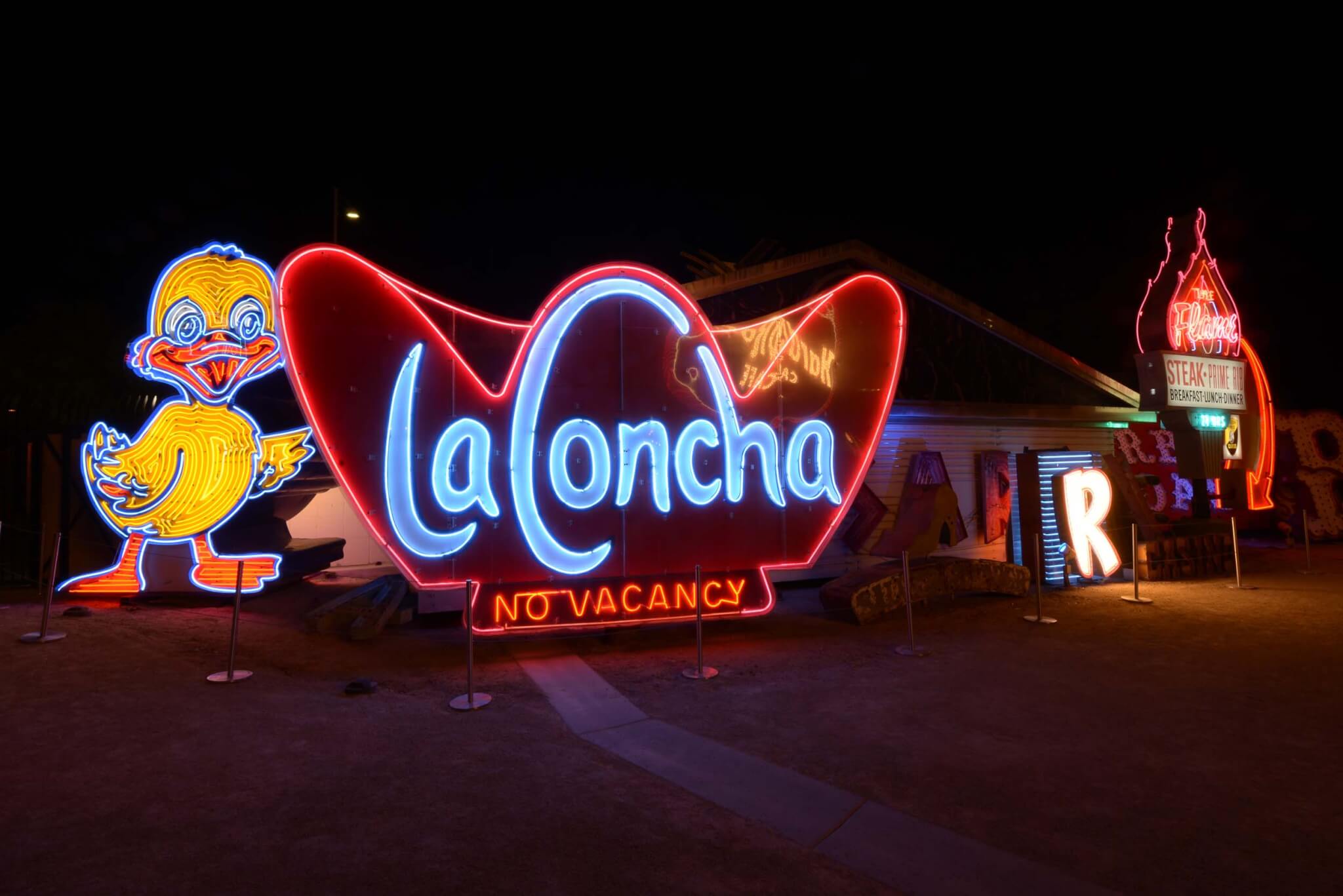
Speaking before one of the talks, Aaron Berger, The Neon Museum’s executive director, stated an aim to elevate the discourse on Las Vegas and to burnish the city’s reputation as a “cultural destination.” This being Vegas, such sophisticated aspirations did not preclude exuberant flourishes sprinkled throughout the programming.
A walking tour stopped first to ogle at the black porcelain toilet in Frank Sinatra’s green room in the Golden Nugget before weaving through the historic casinos along Fremont Street. The Debbie Reynolds exhibit was introduced by her son, Todd Fisher, who used stories of his celebrity childhood to discuss the importance of the physical objects that connect us with history. On a tour through the Neon Boneyard—the museum’s outdoor exhibition space—visitors were encouraged to lie beneath signs to get the historical experience of Vegas: neon glowing against black night sky.

The Neon Museum has a marvelous collection, but this resource was not activated beyond tours of its permanent display. It was a missed opportunity, especially considering Las Vegas’s strained relationship with its history—as architect and boneyard tour guide Eric Strain said, “We don’t preserve our history, we have a tendency to blow up our history.” The only speaker or panelist who did engage the museum’s source material was the architect Stefan Al. His architectural chronology of the Strip chalked up that indifference to history to the continual reinvention of the tourist experience, of which he identified at least six thematic phases since 1941.
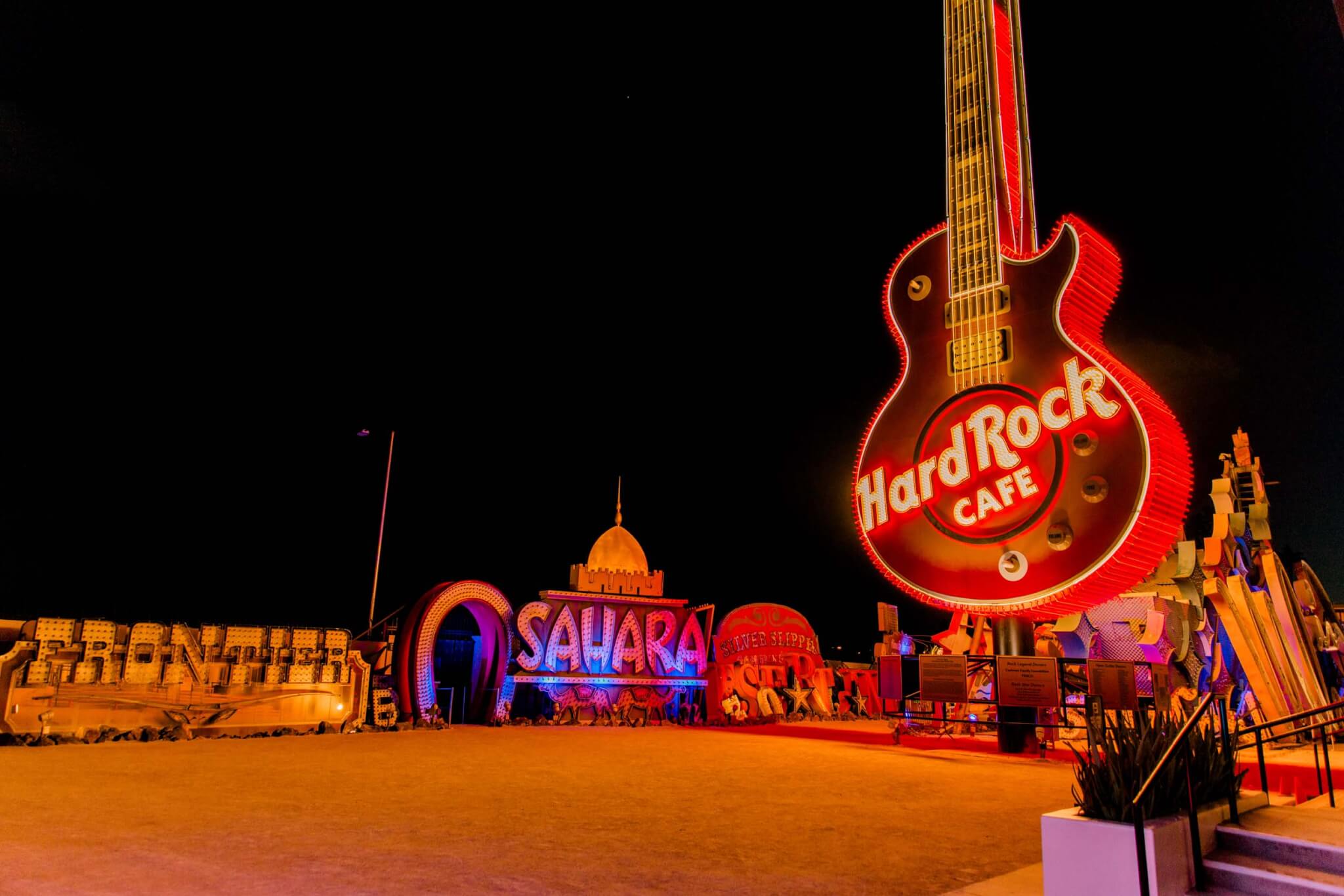
Back in 1972, the authors of Learning from Las Vegas similarly noted how “the most unique, most monumental parts of the Strip . . . are also the most changeable.” Indeed, their study was not of the past but of the immediate, mutable present. In a lecture on the event’s third day, architecture critic Christopher Hawthorne highlighted the book’s deadpan mode of observation, “withholding judgment initially so that later judgment would be more sensitive and understanding.” He asserted such non-judgmental analysis as crucial to any architectural critique, which suggests that no matter your take on this glowing tourism hub in the Mojave Desert, it is nonetheless worth learning from Las Vegas.
At Duck Duck Shed, one lesson of this kind came from a panel on natural light and biophilic environments in casino interiors. Gillian Wynn, daughter of casino developer Steve Wynn, linked these spaces to the escapism and fantasy at the heart of Las Vegas. Claiming that the city is a “deeply democratic reflection of culture” due to the broad array of public it attracts, she offered that the rising popularity of biophilic spaces in Las Vegas reflects a growing fantasy of the garden: “We are craving nature.”

Wynn’s comments went without rejoinder from the rest of the panel, but they hinted at the potential of looking closely at this city, as into a funhouse mirror. Such flashes of insight, too infrequent over four days of programming that felt disjointed and without clear purpose, also suggested the hopeful possibility that future editions of Duck Duck Shed might yet develop into something beyond an anodyne celebration of Las Vegas.
Luke Studebaker is a writer and designer living in Los Angeles. He is a cofounder, with Alfie Koetter, of the design studio Loaf.








